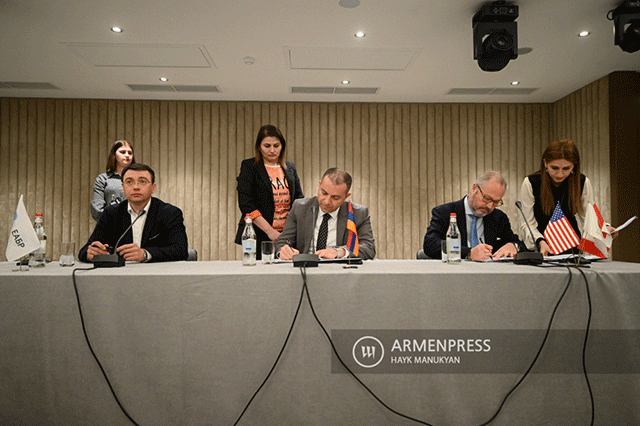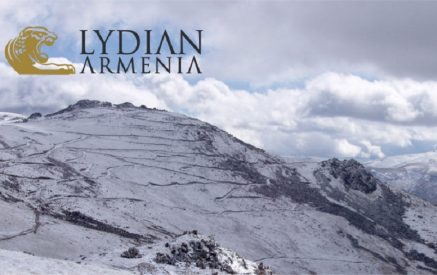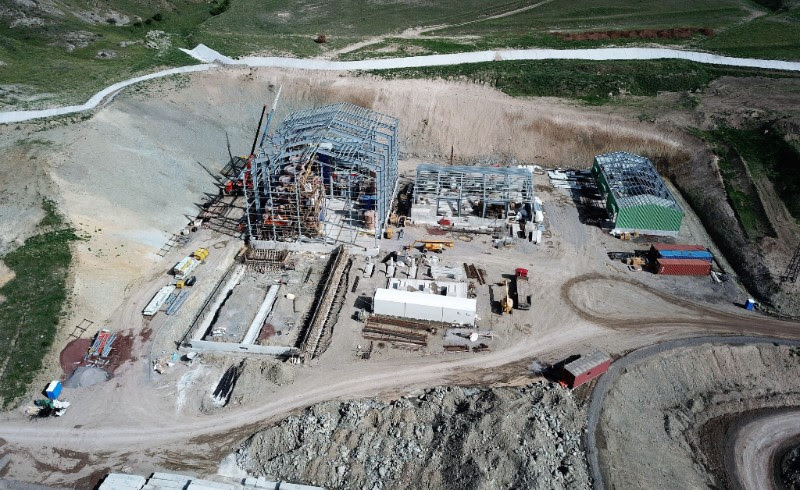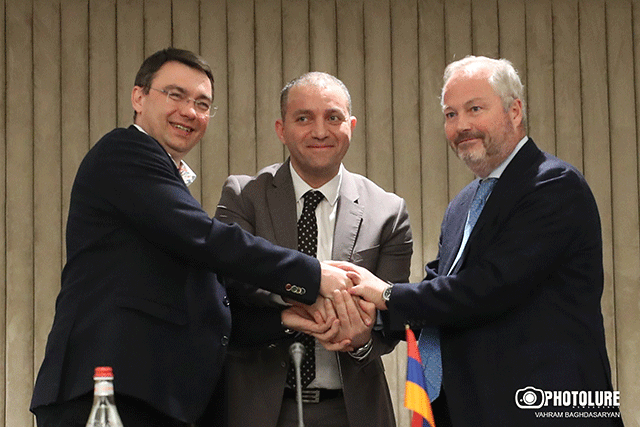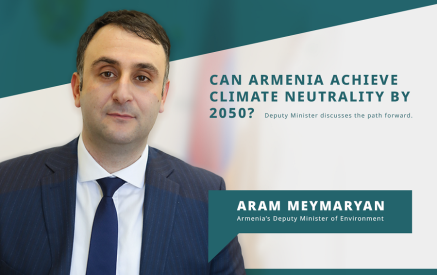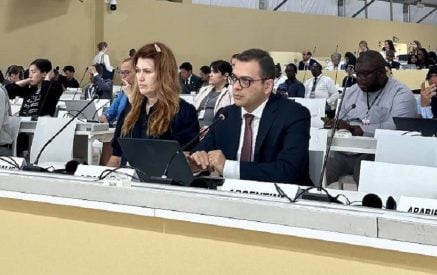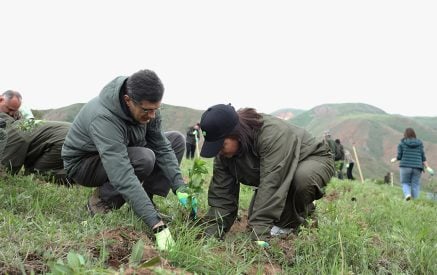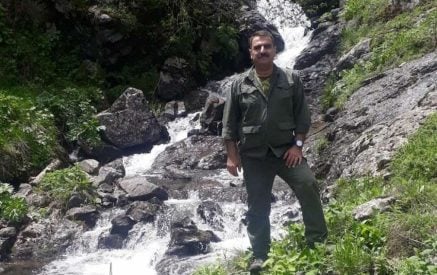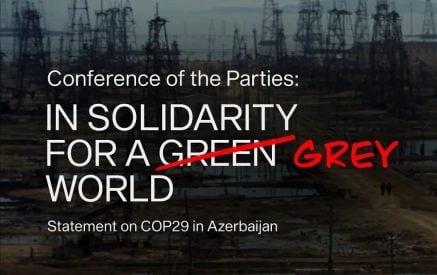On February 22, 2023, the Government of Armenia announced about a trilateral Memorandum with Lydian Armenia and the Eurasian Development Bank (an interstate financial institution with primarily Russian and Kazakhstani capital) aimed at relaunching the Amulsar Gold Mine project. Vahan Qerobyan, Minister of Economy of Armenia, announced that “a package worth 250 million dollars” was being signed.
Once again, a public outcry followed with NGOs, local residents and the public at large demanding the Government to abandon the Amulsar Gold Mine project.
A freedom of information (FoI) request of Transparency International Anti-Corruption Center has made it possible to obtain a copy of the Memorandum and some answers to the questions regarding “the package”.
Read also
We believe it is of utmost importance to inform the Armenian public on the Memorandum’s details, especially given the fact that the latter, like many other “deals”, has been negotiated behind the public’s back, without consultations and any public awareness on the ongoing processes.
The Calculus Behind the “Package”
The obtained documents make it clear that the state-bank-private company trilateral Memorandum is yet another bubble that seems to be somewhat instrumental for Lydian’s potential objectives in the global financial market.
The Memorandum states that in order to relaunch the Amulsar project, Lydian Armenia has to ensure at least 250 million USD investments. These numbers are surprising as such, because back in May 2018 the company was stating that the construction was almost completed, and the mine operation readiness was 80%. The new cost of the project is considered unrealistic in the article by British journalist Thomas Rowley as he quotes the internal communication of the Foreign Office of Britain.
The tentative investment by the Eurasian Development Bank constitutes less than 50% of the due amount- 100 million USD. Another 50 million USD is to be invested by a local bank, a plan still under discussion. That is to say, there is no confirmed local investor at present. And despite the local bank remains undecided, Clause 2.1.3 of the Memorandum already attributes liabilities to it. There is no information on the remaining 100 million USD that Lydian yet needs to raise.
Moreover, the decision of the Eurasian development Bank to lend 100 million USD is not final, either. The bank is now planning to conduct assessments and only afterwards is it going to confirm or reject the loan.
It is noteworthy to remind here that in late April, “Chaarat Gold Holdings Limited” made a statement about discontinuing talks to buy “Lydian Armenia”, stating that it could not agree on an acquisition structure within the required time.
Government modus operandi
The saddest thing in this story is the antidemocratic conduit of the Armenian Government. From the answers to TI’s inquiry and from the Memorandum, we learn that:
- a) The Armenian Government is not going to audit “Lydian Armenia’s” operations or conduct any due diligence before supporting the exploitation of Amulsar gold mine and becoming a shareholder in the project. Apparently, the current government confides by 100% in all the previous cabinets’ positive assessments, as well as assessment of environmental impact and permits regarding the project. And, at the same time, it disregards the expertise of ELARD-TRC companies that had been hired by the Armenian government for the audit of the company’s impact assessments and were paid 500 thousand USD from the state budget.
- b) In return for 12.5% stake in the company, without any financial investment in the company’s equity capital, the Government assumes liability to not only secure unrestricted access for the company to all the sites of the Project (a question arises whether the access will be secured via police violence towards the local opposing population) but also to facilitate any process involving receipt or renewal of licenses or permits. The Government also pledges to safeguard the creditor banks against any force majeure, such as wars, natural disasters, and now, with the new amendment of the “Law on Mineral Resources” in 2022, also against public resistance (that the government shall provide project investing banks with financial guarantees for situations of force majeure, in other words, shall provide financial compensation, should the risk materialize, is an unpreceded kind of guarantee, indeed).
A question arises: what is the purpose of showcasing government support to the project, pledging assistance in obtaining licenses and what not, and eventually signing the Memorandum, involving high officials? For, to do it all, there are relevant government institutions with respective functions within their official capacities that operate in compliance with law and the RA Constitution. Do the Memorandum signing officials think that the respective government bodies in charge might fail to comply with the law? Or, on the contrary, are these officials serving the interests of Lydian Armenia and plan to “instruct” violation of law to subordinate executive bodies in an outright demonstration of power abuse? In either case, we are dealing with governmental “support” that shells nepotism, preemptively obstructs state functions and attempts to bypass the checks and balances of the state, as such, is an illegal and antidemocratic collusion. It is even more so, when the government is aiming at owning shares in the company in question. Since there’s a high risk of conflict of interests in such transactions and operations, it is even more critical to conduct truly independent oversight. Contrary to the philosophy of the Extractive Industries Transparency Initiative (EITI), the malignant practice of “granting” mining company shares to the government in return for some “guarantees” is taking roots in Armenia (in 2021, the 25% of Zangezur Molybdenum and Copper Combine shares were ceded to the Armenian Government), although internationally, this would have given rise to an outstanding corruption scandal.
- c) Another similarly worrisome part of the Memorandum is the clause on providing 7 million USD annually to the local communities. Especially when it concerns communities that are clearly against metal mining in their regions. It should be reminded that in 2018 the enlarged Jermuk community signed a collective public petition and the community council made a decision based on it, that no mining is permitted locally and that the community is pursuing the development of green economy. So, what is a promise of the annual 7 million USD funding to the local communities if not a method of clearing the public opposition with money? This method, by the way, is not new and has been widely used by large corporations to weaken the resistance in the impacted communities. The same practices were used by the company in relation to the impacted communities during the governance of the past governments. Take, for example, the pledge of 7 million USD for the establishment of Jermuk National Park, donations to Luys Foundation and Jermuk Development Fund, as well as business and NGO grants lavished on community members by the company.
A Memorandum on Nothing
Although it has been months since the Memorandum was signed, there is no agreement on the 12.5 % governmental share signed yet, nor is it defined which governmental institution is going to be in charge of managing its shares at “Lydian Armenia” CJSC, or what the government’s liabilities are as a shareholder, or, what the possible ramifications are for the government, should the company default again and so on.
It is still unknown which sources the remaining 100 million USD are going to be raised from and which Armenian bank is co-funding the project. It is also unknown, whether or not the Eurasian Development Bank is actually going to lend 100 mln USD to the project after it competes relevant assessments. Should the Eurasian Development Bank decide to get involved in the project, risks will arise for other stakeholders, as they might face Western sanctions for doing business with a primarily Russia-funded state financial institution.
The nature of this document is well explained in Clause 3.2 of the Memorandum: “The Parties hereby state, that the Memorandum is not a legally binding document, and it shall not entail liabilities or legal consequences under any jurisdiction. The Memorandum, its signing, and any actions within the scope of the Memorandum shall not mean and shall not envisage denial or approval of any of the factual circumstances, nor shall it impose any liabilities of one party on another within the framework of the RA legislation or within legal power in general and the international law”.
Conclusion
The trilateral Memorandum is nothing, but a bubble as it does not entail any power. It rather fits the logic of a PR campaign and most likely aims at helping Lydian Armenia issue yet another round of lucrative statements on the global financial markets. In the past, Lydian Armenia made statements on the securities markets boasting reduction of project costs due to government decisions.
It is hard to censure words to describe the behavior of the Armenian Government on this matter and the fact that it signed such a Memorandum and shouldered liabilities that fortunately have no validity. By acting against the people’s will, the Government behaves as a proponent of private interests only. This does not breed any good for either the ruling party, or the state.
We do hope, however, that common sense will prevail, and the situation will not proceed any further to disastrous consequences, but will rather remain at the status of a Memorandum with no power.
We suggest that the potential local and international investors of the Amulsar project talk and exchange information with all those shareholders who have been investing in the program since 2007, since it is highly likely they will face the same fate.
Armenian Environmental Front initiative of volunteers
Green Armenia NGO




















































